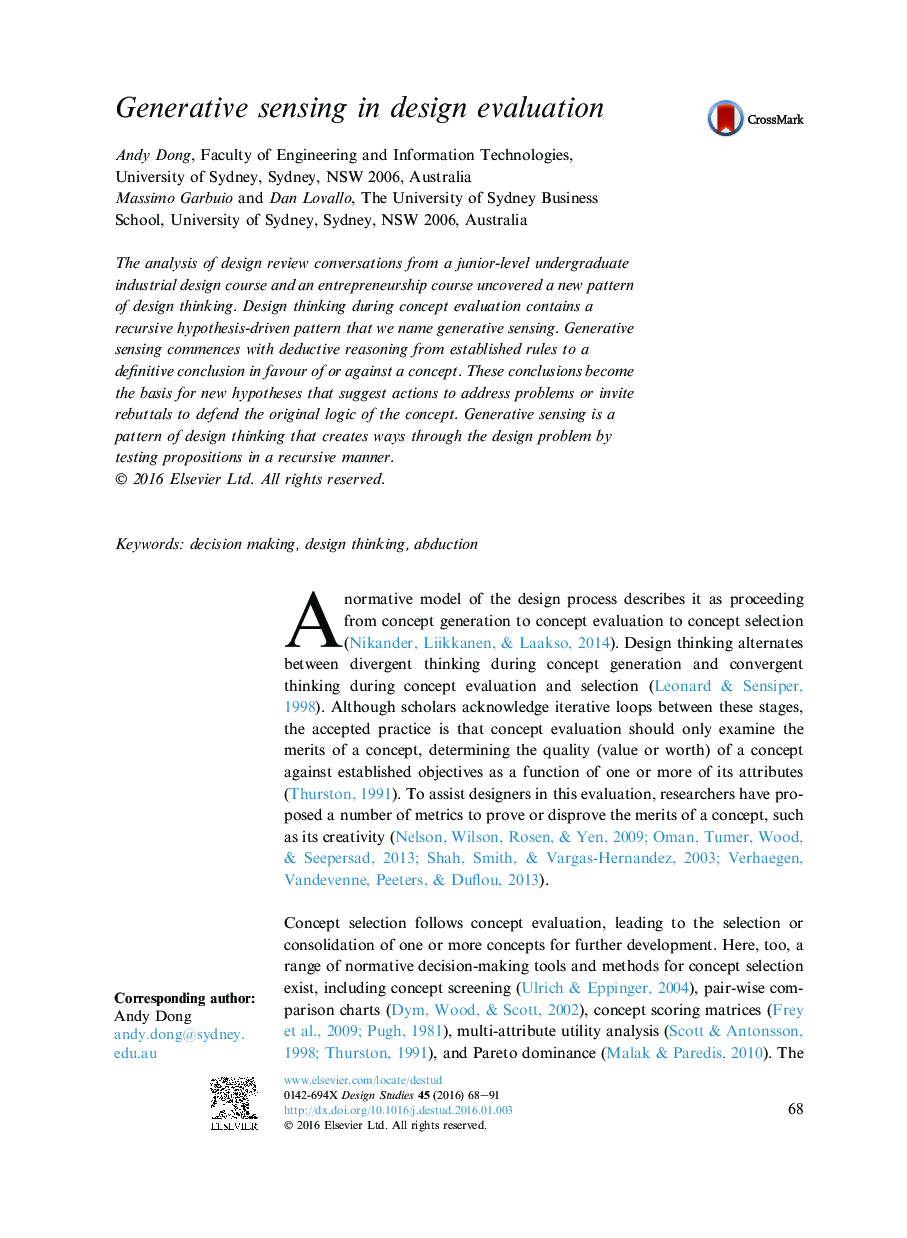| Article ID | Journal | Published Year | Pages | File Type |
|---|---|---|---|---|
| 261452 | Design Studies | 2016 | 24 Pages |
•Analyses design evaluation conversations for forms of logical reasoning.•Conversations include considerations of ‘what is’ and ‘what can be’.•Evaluations lead to hypotheses that resolve or undermine logic of current concept.•Evidence points to a new model of design thinking called generative sensing.•Generative sensing creates ways through a design problem.
The analysis of design review conversations from a junior-level undergraduate industrial design course and an entrepreneurship course uncovered a new pattern of design thinking. Design thinking during concept evaluation contains a recursive hypothesis-driven pattern that we name generative sensing. Generative sensing commences with deductive reasoning from established rules to a definitive conclusion in favour of or against a concept. These conclusions become the basis for new hypotheses that suggest actions to address problems or invite rebuttals to defend the original logic of the concept. Generative sensing is a pattern of design thinking that creates ways through the design problem by testing propositions in a recursive manner.
